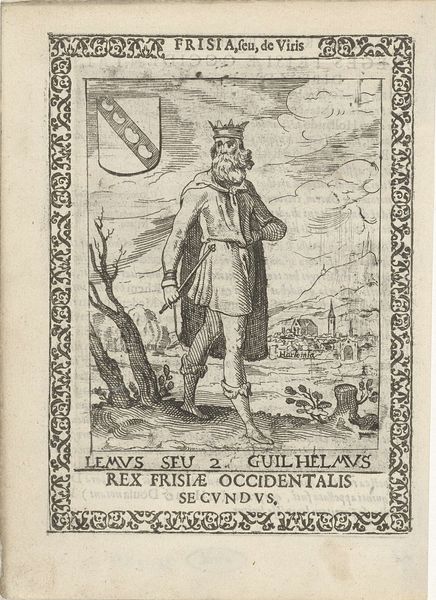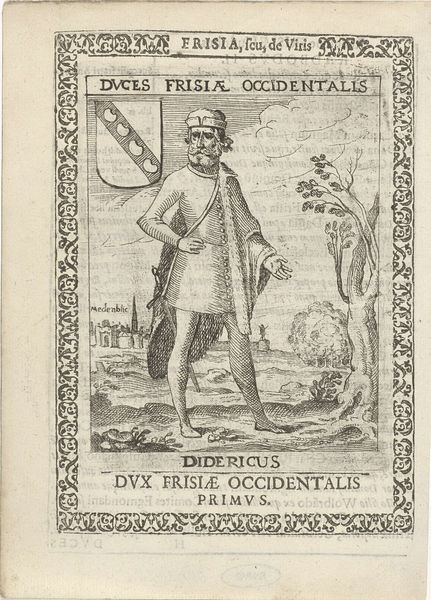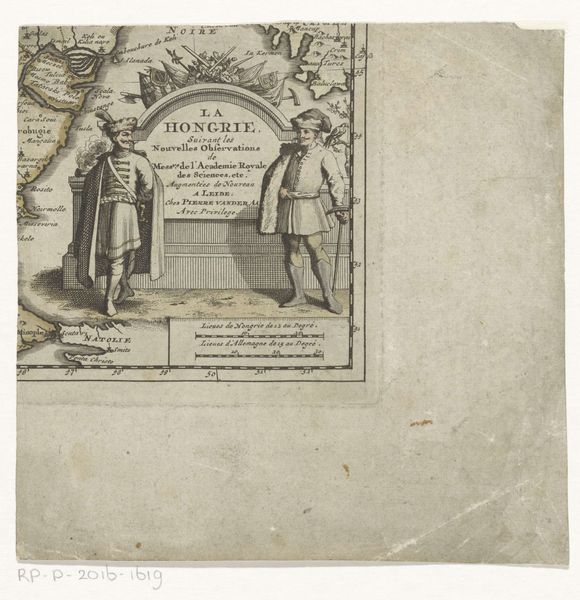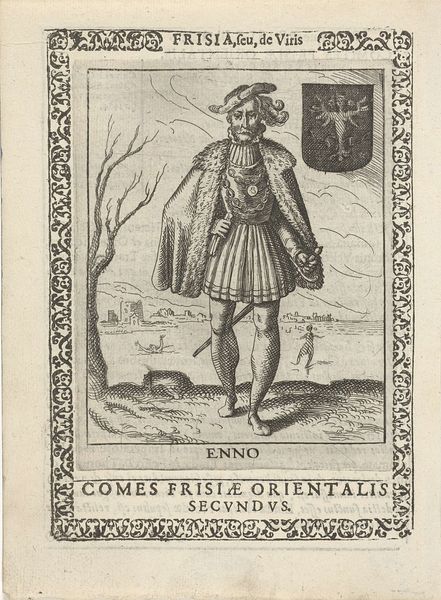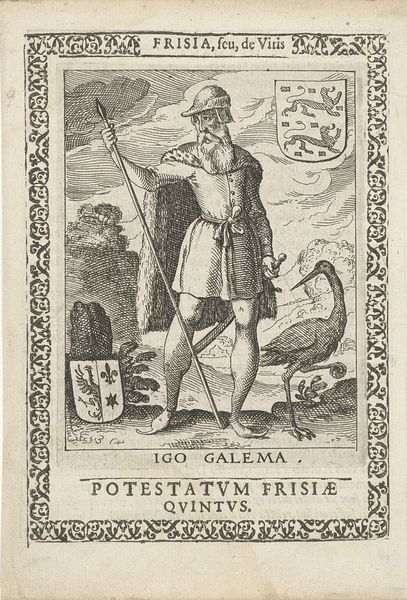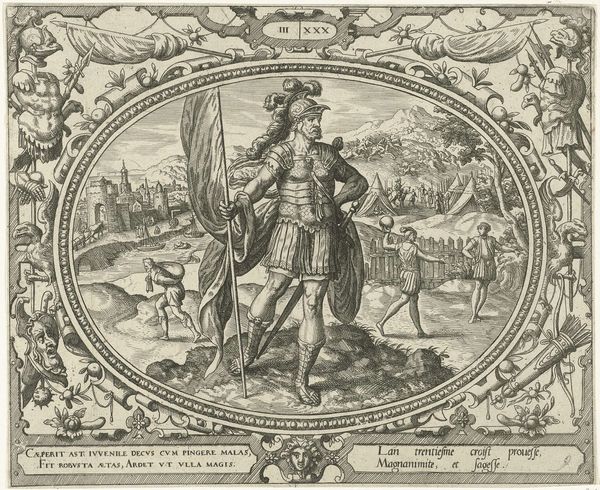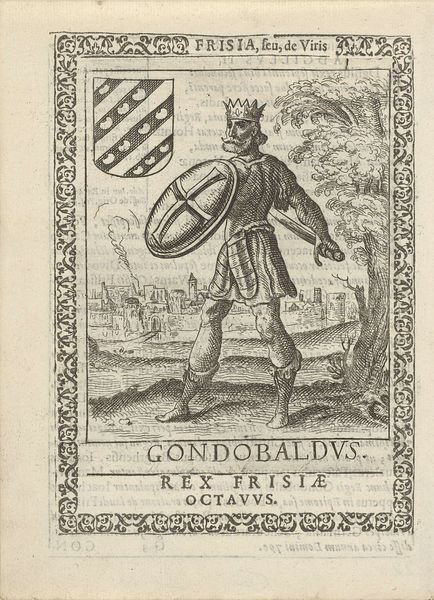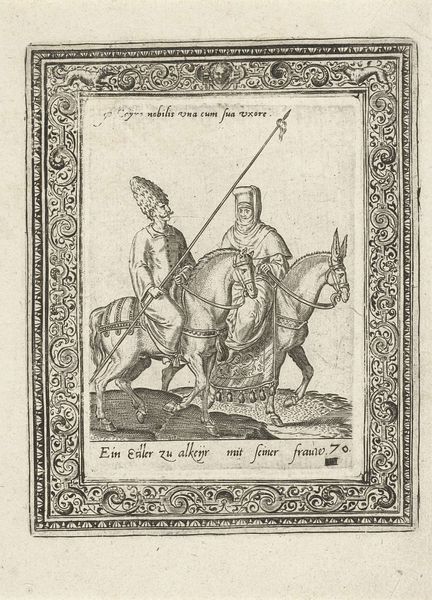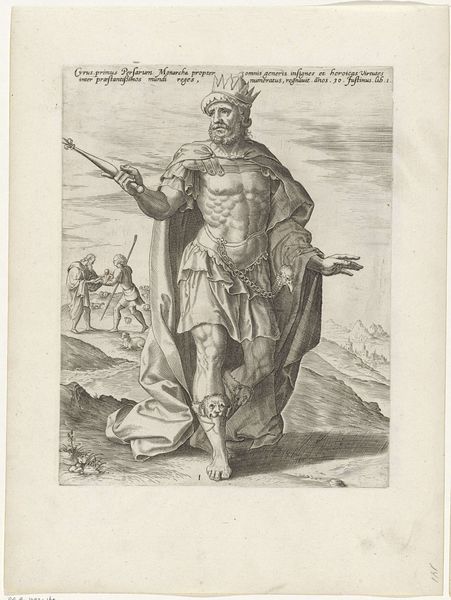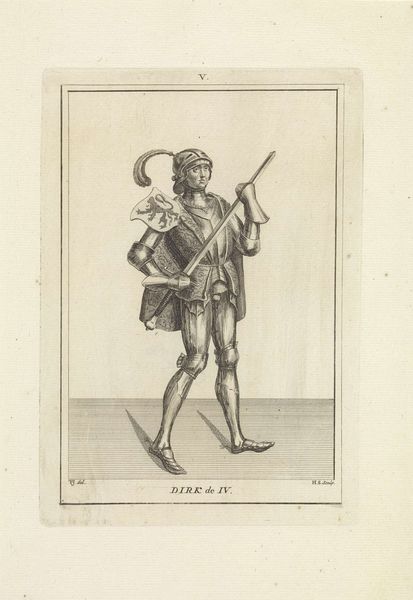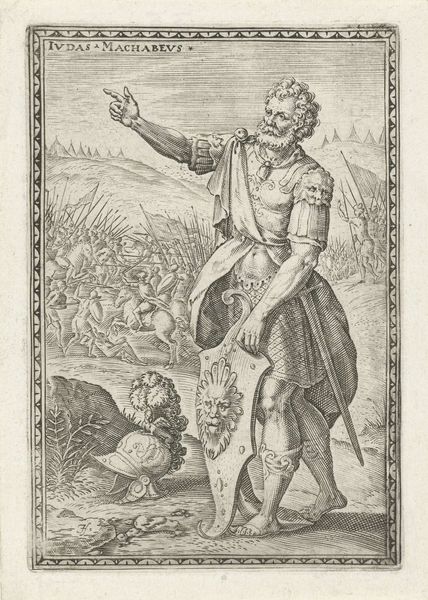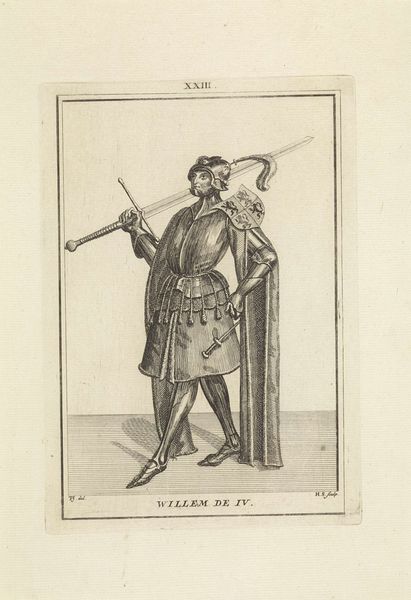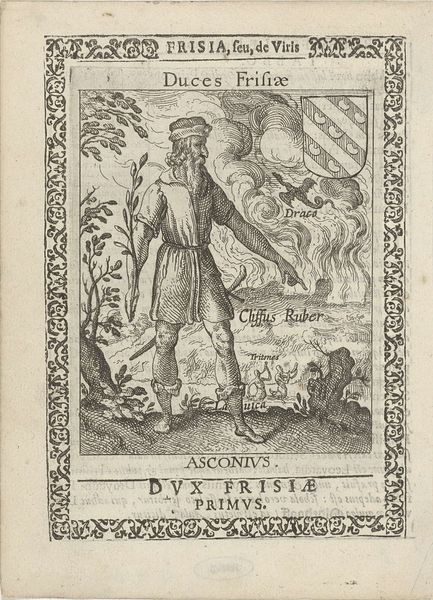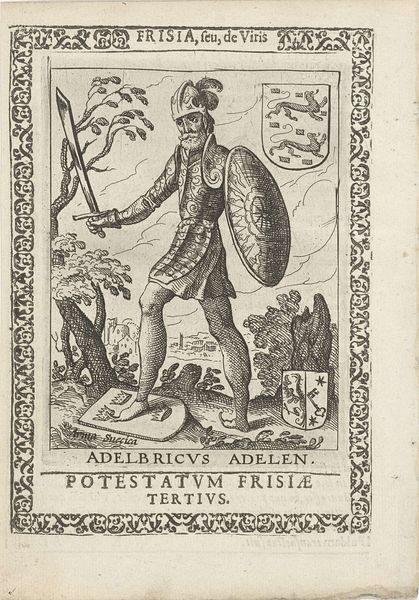
print, engraving
#
portrait
# print
#
old engraving style
#
figuration
#
line
#
history-painting
#
northern-renaissance
#
engraving
Dimensions: height 125 mm, width 100 mm, height 158 mm, width 115 mm
Copyright: Rijks Museum: Open Domain
Editor: This engraving, "Friso, stamvader der Friezen," by Pieter Feddes van Harlingen, was created between 1618 and 1620. I find the figure of Friso very striking; he seems caught between a heroic portrayal and something almost…primitive. What compositional choices stand out to you? Curator: Let's begin with the use of line. The entire composition relies on its precise application to create depth and form. Notice how the density of lines varies to create tonal differences, suggesting light and shadow. How do those visual aspects create meaning? Editor: I guess the varying line density gives the figure more volume and importance than the rather flat landscape and the background buildings. And the sharp definition to Friso's body, like the detailed muscles, conveys a sense of power and maybe idealized strength? Curator: Precisely. Van Harlingen manipulates the medium, line, to establish a clear visual hierarchy. Friso, the titular figure, commands our attention through the deliberate contrasts created by these linear techniques. The sword and spear cut across the frame, don't they? Editor: Yes, they draw the eye along diagonals, which creates dynamism. What do you make of the border around the image itself? Curator: The decorative border functions as a frame within a frame. The density of its patterning contrasts with the relative openness of the central image, reinforcing its self-contained nature. Its role, fundamentally, is ornamental. We must consider how the artist has crafted meaning through these varied elements, focusing always on the interplay of form and structure. Editor: So, by paying attention to these artistic elements—the lines, the composition, even the border—we can begin to understand how the artist wanted us to see Friso, and perhaps understand the intention of the whole work. Curator: Indeed. Form precedes content; by understanding its visual language, we gain a deeper insight into the work's intrinsic qualities.
Comments
No comments
Be the first to comment and join the conversation on the ultimate creative platform.
